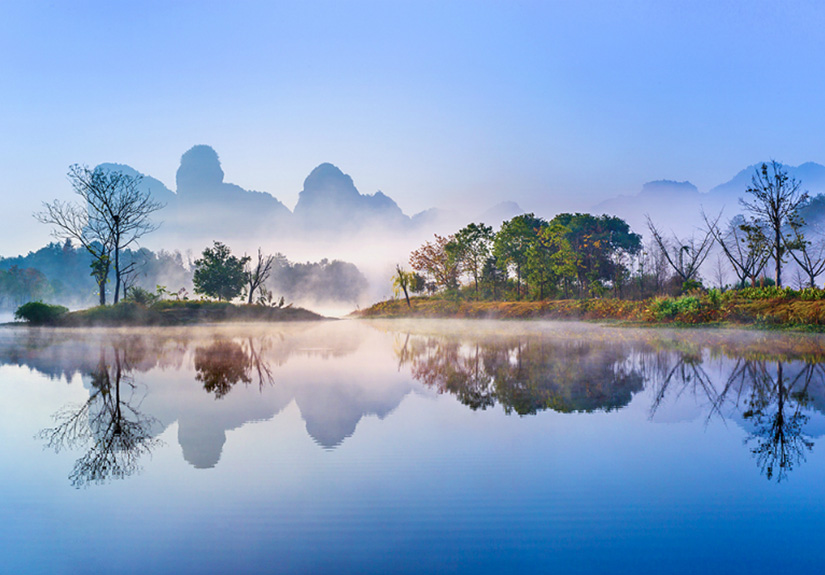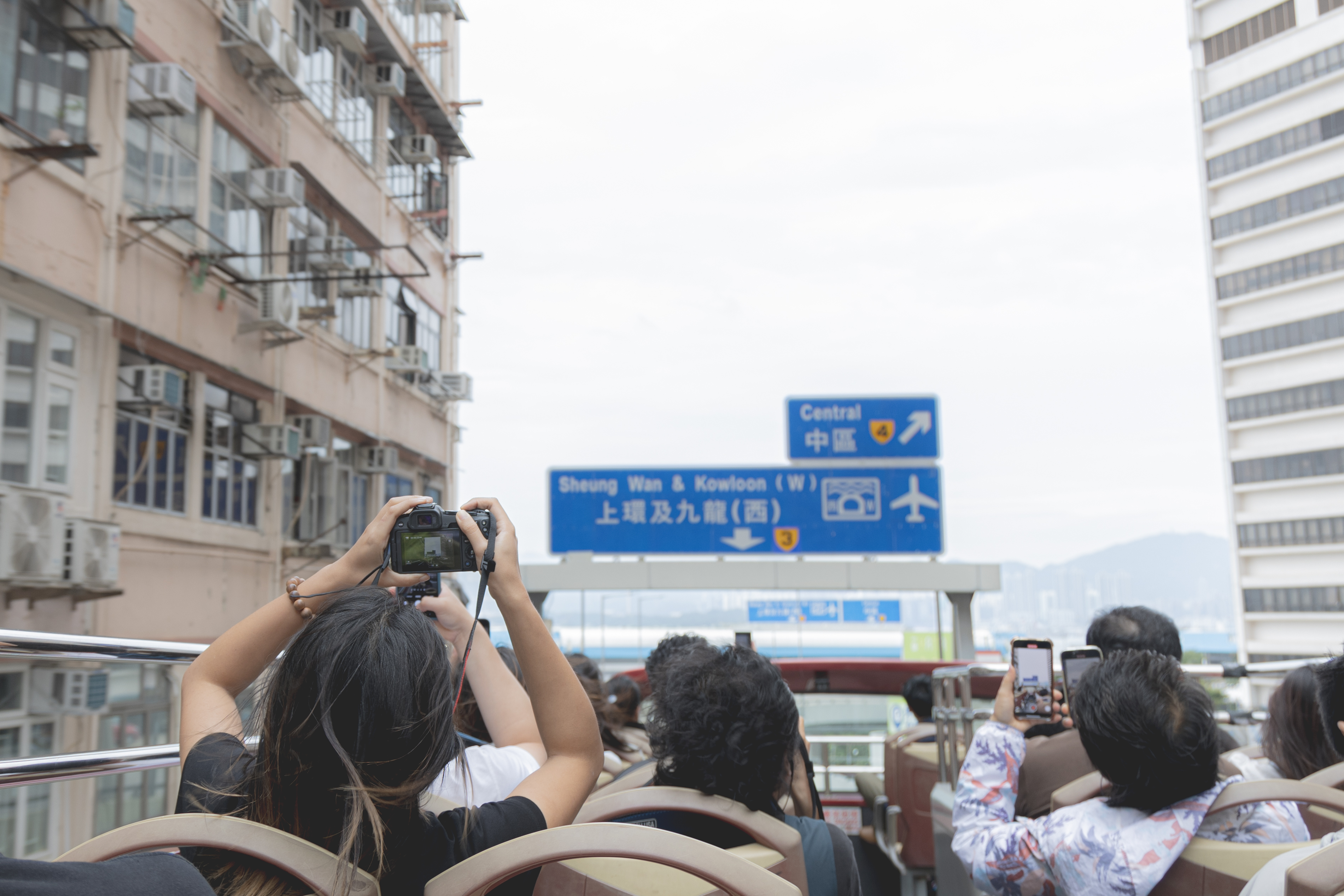Tips for Shooting Silky Smooth Waterfall Photos and Location Recommendation

Shooting Technique
Camera Setting
When it comes to waterfall photography, most of the time we use a slow speed shutter to capture the flow of water to create silky smooth waterfall pictures. That’s why the Tv Mode (shutter-priority mode) or M Mode (manual mode) is preferred as they can give us control on the shutter speed.
To make the waterfall look silky and smooth, a shutter speed of 2s is adequate for a moderate water flow rate. For fast flowing water, a shutter speed of 1s is enough. For the sharpest result, we should mount our camera on a tripod. Besides, use the lowest possible ISO speed to avoid over-exposure and maintain the highest image quality. Be reminded that no exposure compensation should be used as a reduced exposure would shorten the exposure time and affect the image of the flowing water.
For aperture, as we mostly take distant shots of waterfall, the depth of field would not be an issue to the shooting (as focus is set to infinite for distant subject, there will not be any out of focus area). The aperture is thus used to control the exposure mainly. In cases that a large aperture is required to create shallow depth of field, we should attach a filter to avoid over-exposure.
To make the waterfall look silky and smooth, a shutter speed of 2s is adequate for a moderate water flow rate. For fast flowing water, a shutter speed of 1s is enough. For the sharpest result, we should mount our camera on a tripod. Besides, use the lowest possible ISO speed to avoid over-exposure and maintain the highest image quality. Be reminded that no exposure compensation should be used as a reduced exposure would shorten the exposure time and affect the image of the flowing water.
For aperture, as we mostly take distant shots of waterfall, the depth of field would not be an issue to the shooting (as focus is set to infinite for distant subject, there will not be any out of focus area). The aperture is thus used to control the exposure mainly. In cases that a large aperture is required to create shallow depth of field, we should attach a filter to avoid over-exposure.
Using a Tripod
A tripod is indispensible, as waterfall photography requires long exposures. The correct way to stand a tripod stably is with its legs fully open. When we place the tripod on an uneven ground, which is common in waterfall photography, the center of gravity of the tripod would shift away from the center. Special attention has to be paid to the mounted camera especially when a telephoto lens is attached to avoid its falling. We may need to shorten one of the legs to restore balance, or hang a heavy object on the center of the tripod to make it stand more stably. If a heavy object is hung, make sure that it touches the ground or else the object hanging in mid air may be blown down easily by the wind.
Composition / Photo Elements
We should pay attention to the surrounding environment and make use of it to enrich the composition. See where the water flows to and we can include the stream under the waterfall in the composition to create a more directional content that leads the eyes of the viewers. Sometimes we can look at the opposite direction of the flowing water to check out if there are any surprises.


This photo taken at where the waterfall begins at Ng Tung Chai shows the deep valley
Use of ND (Neutral Density) Filter for Reduced Exposure
As mentioned, a shutter speed of 2s is enough to capture silky and smooth waterfall photos. By using a small aperture and low ISO speed, we can achieve the accurate exposure while creating the silky result. However, when the ambient light is too strong and intense, making it impossible to achieve the optimal exposure merely by lowering the aperture and ISO value, a ND filter can be used.
Some people would use a ND filter whenever they are taking photos of waterfall in order to achieve a slower shutter speed. However, we need to be careful as far as the shutter speed is concerned, as there are chances that the surrounding objects like leaves and flowers in the wind would look blurry in the photo due to a shutter speed too slow.
Some people would use a ND filter whenever they are taking photos of waterfall in order to achieve a slower shutter speed. However, we need to be careful as far as the shutter speed is concerned, as there are chances that the surrounding objects like leaves and flowers in the wind would look blurry in the photo due to a shutter speed too slow.
Be Attentive and Flexible
The suggested shutter speed as mentioned above is for reference only, and we should try out different shutter speeds during the actual shooting to find out the most ideal setting. When you review the photo, remember to enlarge it for a clear look of the details - not only the waterfall, but also the surrounding objects to see if any motion blur appears due to the slow speed shutter.
Since controlling the exposure is the key technique for waterfall photography, a cloudy day or places with insufficient sunlight are preferred as we can achieve a slow speed shutter easily to capture the silky water flow. Also, use a lower ISO speed to ensure image quality and vivid colors.
Since controlling the exposure is the key technique for waterfall photography, a cloudy day or places with insufficient sunlight are preferred as we can achieve a slow speed shutter easily to capture the silky water flow. Also, use a lower ISO speed to ensure image quality and vivid colors.
Shooting Locations
Bride’s Pool / Mirror Pool
Bride’s Pool and Mirror Pool are easily accessible waterfalls in Hong Kong. For photo beginners, these places are highly recommended. We can take bus 275R from Tai Po Market railway station on weekends. The bus will take us directly to the entrance. We will see the waterfall in just a few minutes’ walk.

Ng Tung Chai
Ng Tung Chai has a number of waterfalls, namely the Bottom Falls, Middle Falls and Main Falls. The 30m tall Main Falls is one of the greatest waterfalls in Hong Kong. However, it is quite difficult to access and take a long walk of about 45 minutes (walking uphill for most of the time).
We can take bus 64K from Tai Po Market railway station and get off at Ng Tung Chai, then walk towards the Man Tak Yuen direction (you will see the Man Tak Yuen sign at the get off point). After passing Man Tak Yuen, you will reach the entrance and see Bottom Falls, Middle Falls and Main Falls on the way. After shooting, you can take the same route back.
We can take bus 64K from Tai Po Market railway station and get off at Ng Tung Chai, then walk towards the Man Tak Yuen direction (you will see the Man Tak Yuen sign at the get off point). After passing Man Tak Yuen, you will reach the entrance and see Bottom Falls, Middle Falls and Main Falls on the way. After shooting, you can take the same route back.

The Bottom Falls at Ng Tung Chai is not large in scale, but the environment here is adventurous and is good for taking group pictures

The Middle Falls at Ng Tung Chai has a large volume of water flowing even in non-rainy season. Try black and white mode to outstand the texture of the rocky wall

The Main Falls at Ng Tung Chai. This photo was taken in spring with little water flowing. But we can tell from the picture that the waterfall is very tall. In summer when the rains come, the waterfall would look more spectacular. With a higher volume of water down the waterfall, we can take better pictures but the shooting condition would become more challenging as well. Always remember to put safety first when shooting!





